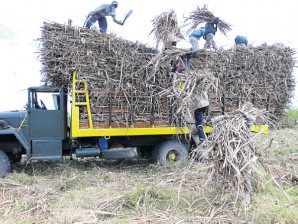HACIENDA LUISITA, Tarlac City—“They did not even come here to consult us, [we the] stockholders. Who said we did not like [SDO or the stock distribution option]?”
This was the lament of 64-year-old farmer Victor Garcia before television cameras here on Saturday. Garcia’s anger was directed at the justices of the Supreme Court who, voting 14-0 in November last year, favored the distribution of 4,915 hectares in Hacienda Luisita to 6,296 farm workers.
The decision changed their status—from being stockholders of the firm managing the estate to becoming landowners. The high court sealed this by affirming on April 24 its November decision and ruling that the value of the land should be based on 1989 rates when the Comprehensive Agrarian Reform Program (CARP) took effect in Hacienda Luisita in the form of SDO instead of outright land distribution.
“Upon a review of the facts and circumstances, we realize that [farm workers-beneficiaries] will never have control over these agricultural lands for as long as they remain as stockholders of HLI (Hacienda Luisita Inc.),” the high court said in its November 2011 ruling.
It pointed out that the farm workers’ capital stock of almost 33 percent fixed them as a minority in HLI. The Cojuangco family’s Tarlac Development Corp. remained the majority owner.
Garcia preferred the SDO because it guaranteed salaries, bonuses and benefits. HLI told the high court it gave P3-billion worth of salaries, wages and benefits to the farm workers—the company’s stockholders—from 1989 to 2005.
In a referendum in August 2010, more than 7,000 farm workers voted to retain the SDO, while 142 others chose land distribution, said lawyer Antonio Ligon, HLI spokesperson.
“If the Supreme Court thinks I’m happy getting a piece of land, tell them I’m not. How can I make this productive? I’m old and I don’t have money to farm,” Garcia said.
Sharing Garcia’s position was Marciano Viadan, vice president of the Lehitimong Manggagawang Bukid ng Hacienda Luisita (LMBHL) and former vice president of the United Luisita Workers Union (Ulwu).
“We are jobless. Where will we get payments for land amortization?” he said. It worries him that, eventually, the farm workers will sell their lands when faced with financial problems.
“So we risk losing the land. No more capital [for agricultural production],” Viadan, 53, said.
Ligon said HLI had not made any arrangements with the farm workers who stand to receive land when the sugar estate is distributed.
“We will wait for conditions and prohibitions of land distribution. But we will not circumvent the law. The welfare of farm workers is important to us,” he said.
HLI, he said, did not know what to do with the 4,206 farm workers excluded from receiving land because they were not signatories to the 1989 SDO.
“They could not have shares in the HLI because there’s no more land [that can represent shares of stock],” Ligon said.
He denied reports that the mill of Central Azucarera de Tarlac (CAT), also owned by the Cojuangco family and located in the estate, was closing.
The mill site is not covered by the CARP. CAT produces 3 percent of the sugar supply in the country, according to Ligon.
Viadan said the LMBHL was looking at the mill as a resource as they face life anew as landowning farmers.
“We plan to grow sugarcane,” he said, adding his group was looking forward to renting equipment from HLI to till their land.
